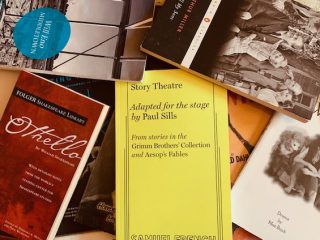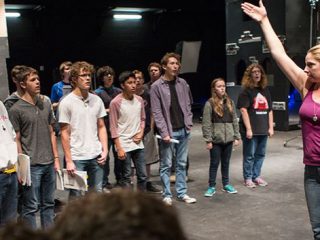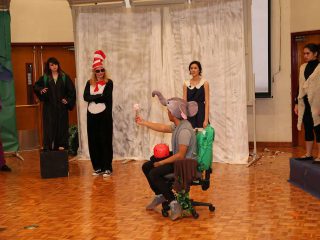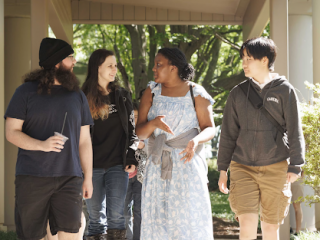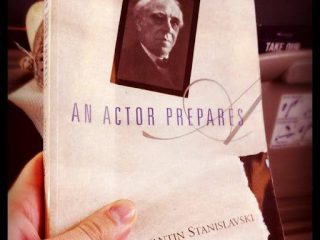There’s no shortage of acting teachers and methodologies out there, from Stanislavski to Strasburg and Hagen to Meisner. But one often-overlooked pioneer in acting training is Earle Gister, whose unique take on Stanislavski’s system of actions influenced generations of actors. Let’s take a look at the Gister method and how it compares to other acting techniques.
A Gister Snapshot
Earle Gister was born in Wisconsin in 1934 and was the editor of the Tulane Drama Review while a student at Tulane University. During his studies with theatre scholar Robert Corrigan, Gister began to develop his acting methodology. In 1962, he joined the Drama department at the prestigious Carnegie Mellon University, where he worked until 1975. He went on to serve as the associate dean of the Yale School of Drama from 1979 to 1999. It was at Yale that he had the most prolific impact, training actors like Angela Bassett, Courtney Vance, and Liev Schreiber.
Gister was especially known for his expertise and passion for the plays of Anton Chekhov and directed a production of The Seagull in New York City in in 2009. He passed away in 2012 at the age of 77.
The Method
The Gister method is firmly rooted in Stanislavski in that it calls for actors to break down a scene and identify what their character is actively doing to in the scene (as opposed to simply playing an emotion). Gister’s major innovation was crafting his own version of what Stanislavski called tactics. In Stanislavki’s system, actors are trained to find an active verb for what their character is doing to the other character in a scene. It might be flirting, begging, cajoling…something that the actor can actively do. These tactics are driven by what the character needs or wants in a scene. So, if my character needs to get a loan from my brother, I can beg him or I can threaten him. I might even do both in the same scene. I could also flatter him, or reason with him…whatever choice I decide to make based on the text. Stanislavski theorized that, by playing different tactics, actors could make a scene or monologue dynamic and compelling.
Gister taught that, instead of tactics, actors should play what he called actions. In Gister’s method, actions are designed to make the other character feel a certain way. In other words, Stanislavski would ask “what are you trying to do to the other character?” and Gister would ask “how are you trying to make the other character feel?” This made a scene even more dynamic, Gister felt, because instead of continuing to change tactics, an actor can change not only how they want the other character to feel, but how they’re trying to make the character feel how they want them to feel.

Here’s an example to illustrate. Say I’m playing Felix from The Odd Couple and I’m doing a scene with Oscar. Using the Gister method, I would decide how I wanted to make Oscar feel throughout the scene. Maybe I want to make him feel needed at one point. Then the scene changes a bit and I decide I want to make him feel ashamed. Instead of focusing on what tactics to play, I’d focus on playing to make Oscar feel needed and then ashamed. To add even more depth and variety, I can decide exactly how I want to make him feel needed. Maybe I want to make him feel needed in an aggressive way. Then I make him feel needed in a nurturing way. But that doesn’t work so I move on to making him feel ashamed. I can make him feel ashamed in a matronly way. Or I can make him feel ashamed in a passive aggressive way. The combinations are endless!
Picture It…
Speaking of visualizing, the Gister method also trains actors to send actions to objects or characters who aren’t present in the scene. For example, say I’m doing a scene where I’m telling the character of Steve all about my terrible brother Phil. As an actor, I can form an image of Phil as I’m talking about him and send an action out. Essentially, I’m imagining that Phil is right there in the room and I’m going to make him feel disgusting or obnoxious or whatever action I decide is appropriate. I can do the same thing if I’m talking about an inanimate object. Perhaps I’m looking out the window at the orchard in Chekhov’s The Cherry Orchard. How do I want to make the cherry orchard feel?
Why on earth, you might ask, would I want to make a bunch of trees feel something? Just like Stanislavski taught that playing tactics would stir the actor’s emotion and imagination, Gister said the same thing about playing actions. By always sending an action towards something or someone, Gister said that actors can stimulate a richer emotional life.

Imaging can also help when actors are performing a monologue. Actors can visualize their scene partner and send their action to the image.
Gister Today
Earle Gister passed away in 2012, but his method continues to be widely taught in both undergraduate and graduate theatre programs. Before his death, Gister collaborated with former student Joe Alberti, now an acting teacher himself, on Acting: The Gister Method. The book is a step-by-step handbook on the method and how it applies to scene and monologue work.
It offers practical examples of how to apply the method to both classical and contemporary scene work.
While not quite as much of a household name as perhaps Meisner or Hagen, Earle Gister continues to have a profound impact on acting training. For more about Earle Gister, keep a look out for our upcoming Practitioner Guide on StageAgent for Schools!





